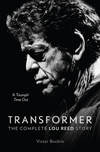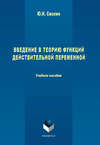Kitabı oxu: «Transformer: The Complete Lou Reed Story»

Copyright
Harper
An imprint of HarperCollinsPublishers
77–85 Fulham Palace Road
Hammersmith, London W6 8JB
First published in Great Britain by Hutchinson 1994
This edition Harper 2014
© Victor Bockris 1994, 2014
A catalogue record of this book is
available from the British Library
Cover layout design © HarperCollinsPublishers Ltd 2014
Cover photograph © Simone Cecchetti/Corbis
While every effort has been made to trace the owners of copyright material reproduced herein and secure permissions, the publishers would like to apologise for any omissions and will be pleased to incorporate missing acknowledgements in any future edition of this book.
All rights reserved under International and Pan-American Copyright Conventions. By payment of the required fees, you have been granted the nonexclusive, non-transferable right to access and read the text of this e-book on screen. No part of this text may be reproduced, transmitted, downloaded, decompiled, reverse engineered, or stored in or introduced into any information storage retrieval system, in any form or by any means, whether electronic or mechanical, now known or hereinafter invented, without the express written permission of HarperCollins e-books.
Find out about HarperCollins and the environment at
Source ISBN: 9780007581894
Ebook Edition © October 2014 ISBN: 9780007581900
Version: 2014-10-05
Praise
“Bockris’s new work is instantly recognizable as the heavyweight psychological powerplay Lou Reed’s legend deserves … Reed is effectively pinned like a butterfly”—Q
“Transformer depicts the singer’s life as a series of death-defying second acts”—New York Times Book Review
“A very readable portrait … Blending informed biographical narrative with abundant quotes and a dishy, conversational style, Bockris captures the many moods—and mood swings—of a true rock and roll chameleon”—Entertainment Weekly
“Transformer is an even more staggering brief than Wired (about John Belushi)”—Spin
“Bockris provides insight into the private life that led Reed to create many of rock’s memorable songs, including “Heroin” and “Walk on the Wild Side”—Publishers Weekly
“One of the funniest and most memorable time-lined rock documents around”—Philadelphia City Paper
Also by Victor Bockris
Muhammad Ali in Fighter’s Heaven
Keith Richards: The Biography
Making Tracks: The Rise of Blondie (with Debbie Harry and Chris Stein)
Uptight: The Velvet Underground Story (with Gerard Malanga)
Warhol: The Biography
With William Burroughs: A Report from the Bunker
Patti Smith: A Biography
What’s Welsh for Zen: The Autobiography of John Cale (with John Cale)
Beat Punks
Rebel Heart: An American Rock ’n’ Roll Journey (with Bebe Buell)
The Burroughs–Warhol Affair
Burroughs Reloaded (photographs)
Dedication
This book is dedcated to Barney Hoskyns, Gerard Malanga, Bob Gruen, and Legs McNeil
Contents
Cover
Title Page
Copyright
Praise
Also by Victor Bockris
Dedication
Acknowledgments
Epigraph
One: Kill Your Son, 1959–60
Two: Pushing the Edge, 1960–62
Three: Shelley, If You Just Come Back, 1962–64
Four: The Pickwick Period, 1964–65
Five: The Formation of the Velvet Underground, 1965
Six: Fun at the Factory, 1966
Seven: Exit Warhol, 1966–67
Eight: Exit Cale, 1967–68
Nine: The Deformation of the Velvet Underground, 1968–70
Ten: Fallen Knight, 1970–71
Eleven: The Transformation from Freeport Lou to Frankenstein, 1971–73
Twelve: No Surface, No Depth, 1973–74
Thirteen: The Nervous Years, 1974–76
Fourteen: The Master of Psychopathic Insolence, 1977–78
Fifteen: Mister Reed, 1978–79
Sixteen: Ladybug, 1978–83
Seventeen: The New, Positive Lou (The Blue Lou), 1984–86
Eighteen: The Commercial, Political Lou, 1984–86
Nineteen: Imitation of Andy, 1987–89
Twenty: Death Makes Three, 1990–93
Twenty-One: In Which Lou Reed Cannot Put On the Velvet Underwear, 1990–96
Twenty-Two: The Transformation of Lou and Laurie, 1994–2000
Fast Forward: Val Kilmer’s Ranch, The Pecos, New Mexico, 2005
Twenty-Three: Ecstasy, 1999–2001
Twenty-Four: Lou Reed Rewrites Edgar Allan Poe, 2001–04
Twenty-Five: Lou Reed Classics, 2006
Twenty-Six: Lou Is Lulu, 2011–12
Twenty-Seven: The Death of Lou Reed, 2013
Appendix A: Lou Reed and Laurie Anderson’s Inventories of Work
Appendix B: Interviews with Lou Reed
Source Notes
Bibliography
List of Searchable Terms
About the Publisher
Acknowledgments
Thanks for input and enlightenment to Andy Warhol, Lisa Krug, Andrew Wylie, Albert Goldman, Robert Dowling, Gerard Malanga, Syracuse University Rare Book Room, the staff of Creedmore Mental Hospital, Paul Sidey, lngrid von Essen, Dawn Fozard, Stellan Holm, Marianne Erdos, Barbara Wilkintson, Jessica Berens, Chantal Rosset, Elvira Peake, Anita Pallenberg, Marianne Faithfull, Allen Ginsberg, David Dalton, Miles, Jeff Goldberg, Ira Cohen, Rosemary Bailey, Phillip Booth, Allen Hymari, Andy Hyman, Richard Mishkin, Bob Quine, Raymond Foye, Diego Cortez, Clinton Heylin, Jan van Willegen, John Holmstrom, Legs McNeil, Bobbie Bristol, Ann Patty, Carol Wood, John Shebar, Charles Shaar Murray, Mick Farren, Michael Watts, Emie Thormahlen, Gisella Freisinger, William Burroughs, John Giomo, Stewart Meyer, Terrence Sellers, Chris Stein, Bob Gruen, David Bourdon, Jonathan Cott, Ed and Laura DeGrazia, Bobby Grossman, Art and Kym Garfunkel, Patti Giordano, Stephen Gaines, Lee Hill, Marcia Resnick, Michelle Loud, Terry Noel, Glenn O’Brien, Robert Palmer, Rosebud, Geraldine Smith, Walter Stedding, David Schmidlapp, Lynn Tillman, Hope Ruff, James Carpenter, Tei Carpenter, Toshiko Mori, Gus Van Sant, Mary Woronov, Matt Snow, Roger Ely, Paul Katz, Gayle Sherman, Cassie Jones, Dominick Anfuso, J. P. Jones, James Grauerholz, Terry and Gail Southern, Heiner Bastian, Danny Fields, Dr. J. Gross, Steve Bloom, Bridget Love, Mary Harron, Jeff Butler, Solveig Wilder, Rick Blume, Lenny Kaye, Tony Zanetta, Doug Yule, Tony Conrad, Richard Meltzer, Nick Kent, Richard Witts, Nick Tosches, Kurt Loder, Julie Burchill, and John Wilcock.
ACKNOWLEDGMENTS TO THE 2014 EDITION
I am particularly grateful to the writers Barney Hoskyns, Nick Johnstone, and David Fricke, whose profiles of Lou Reed were always spectacular and insightful; Allan Jones for Uncut’s ultimate guide to Lou’s music and all his Lou Reed articles; Jann Wenner for Rolling Stone’s Lou Reed issue; Phil Alexander at Mojo, and all the rock writers who work so passionately to keep us in touch with the music; Roderick Romero, the creative force in his legendary trance rock band Sky Cries Mary and a giant in the tree-house world, who shared some visionary memories of his friendship with Lou; thanks also to Bob Gruen for his eyes and his sense of humor; David Schmidlapp, Barry Miles, and the staff of the beautiful Jane West Hotel.
One of the great ironies of Lou Reed’s life is that he would hardly have had a career if it weren’t for the outstanding writers who wrote glowingly about him in the face of his scorn. I have never understood why people in the rock world look upon biographies as attacks when they are the best free advertising a rock star could possibly get. All those people should thank the writers for taking the time to address their audiences intelligently, just as I am thanking every writer for everything I learned about Lou in his last truly great period. There is something deeply engaging in the Lou and Laurie story. Somebody should write a book about it.
Epigraph
When I think of Lou, I remember what a romantic he was. And fun. And then when he had you hooked with that sweetness, he had to destroy you in order to survive. He couldn’t help himself, like any predator. He always warned his prey, partly as a challenge and partly to cover his ass for any later moral responsibility. What made the process interesting was the fact that it was an ongoing intellectual and artistic work—a performance piece.
An acquaintance
Chapter One
Kill Your Son
ELECTROSHOCK: 1959–60
I don’t have a personality.
Lou Reed
Nineteen fifty-nine was a bad year for Lou, seventeen, who had been studying his bad-boy role ever since he’d worn a black armband to school when the No. 1 R&B singer Johnny Ace shot himself back in 1954. Now, five years later, the bad Lou grabbed the chance to drive everyone in his family crazy. Tyrannically presiding over their middle-class home, he slashed screeching chords on his electric guitar, practiced an effeminate way of walking, drew his sister aside in conspiratorial conferences, and threatened to throw the mother of all moodies if everyone didn’t pay complete attention to him.
That spring, Lou’s conservative parents, Sidney and Toby Reed, sent their son to a psychiatrist, requesting that he cure Lou of homosexual feelings and alarming mood swings. The doctor prescribed a then popular course of treatment recently undergone by, among many others, the British writer Malcolm Lowry and the famous American poet Delmore Schwartz. He explained that Lou would benefit from a series of visits to Creedmore State Psychiatric Hospital. There, he would be given an electroshock treatment three times a week for eight weeks. After that, he would need intensive postshock therapy for some time.
In 1959 you did not question your doctor. “His parents didn’t want to make him suffer,” explained a family friend. “They wanted him to be healthy. They were just trying to be parents, so they wanted him to behave.” The Reeds nervously accepted the diagnosis.
Creedmore State Psychiatric Hospital was located in a hideous stretch of Long Island wasteland. The large state-run facility was equipped to handle some six thousand patients. Its Building 60, a majestically spooky edifice that stood eighteen stories high and spanned some five hundred feet, loomed over the landscape like a monstrous pterodactyl. Hundreds of corridors led to padlocked wards, offices, and operating theaters, all painted a bland, spaced-out cream. Bars and wire mesh covered the windows inside and out. Among the creepiest of these cells was the Electra Shock Treatment Center.

Creedmore State Mental Hospital. (Victor Bockris)
Into this unit one early summer day walked the cocky, troubled Lou. He was escorted through a labyrinth of corridors, unaware, he later claimed, that his first psychiatric treatment session at the hospital would consist of volts of electricity pulsing through his brain. Each door he passed through would be unlocked by a guard, then locked again behind him. Finally he was locked into the electroshock unit and made to change into a scanty hospital robe. As he sat uncomfortably in the waiting room with a group of people who looked to him like vegetables, Lou caught his first glimpse of the operating room. A thick, milky white metal door studded with rivets swung open revealing an unconscious victim who looked dead. The body was wheeled out on a stretcher and into a recovery room by a stone-faced nurse. Lou suddenly found himself next in line for shock treatment.
He was wheeled into the small, bare operating room, furnished with a table next to a hunk of metal from which two thick wires dangled. He was strapped onto the table. Lou stared at the overhead fluorescent light bars as the sedative started to take effect. The nurse applied a salve to his temples and stuck a clamp into his mouth so that he would not swallow his tongue. Seconds later, conductors at the end of the thick wires were attached to his head. The last thing that filled his vision before he lapsed into unconsciousness was a blinding white light.
In the 1950s, the voltage administered to each patient was not adjusted, as it is today, for size or mental condition. Everybody got the same dose. Thus, the vulnerable seventeen-year-old received the same degree of electricity as would have been given to a heavyweight axe murderer. The current searing through Lou’s body altered the firing pattern of his central nervous system, producing a minor seizure, which, although horrid to watch, in fact caused no pain since he was unconscious. When Lou revived several minutes later, however, a deathly pallor clung to his mouth, he was spitting, and his eyes were tearing and red. Like a character in a story by one of his favorite writers, Edgar Allan Poe, the alarmed patient now found himself prostrate in a dim waiting room under the gaze of a stern nurse.
“Relax, please!” she instructed the terrified boy. “We’re only trying to help you. Will someone get another pillow and prop him up. One, two, three, four. Relax.” As his body stopped twitching, the clamp was removed, and Lou regained full consciousness. Over the next half hour, as he struggled to return, he was panicked to discover his memory had gone. According to experts, memory loss was an unfortunate side effect of shock therapy, although whatever brain changes occurred were considered reversible, and persisting brain damage was rare. As Reed left the hospital, he recalled, he thought that he had “become a vegetable.”
“You can’t read a book because you get to page seventeen and you have to go right back to page one again. Or if you put the book down for an hour and went back to pick up where you started, you didn’t remember the pages you read. You had to start all over. If you walked around the block, you forgot where you were.” For a man with plans to become, among other things, a writer, this was a terrible threat.
The aftereffects of shock therapy put Lou, as Ken Kesey wrote in One Flew Over the Cuckoo’s Nest, “in that foggy, jumbled blur which is a whole lot like the ragged edge of sleep, the gray zone between light and dark, or between sleeping and waking or living and dying.” Lou’s nightmares were dominated by the sad, off-white color of hospitals. As he put it in a poem, “How does one fall asleep / When movies of the night await, / And me eternally done in.” Now he was afraid to go to sleep. Insomnia would become a lifelong habit.
Lou suffered through the eight weeks of shock treatments haunted by the fear that in an attempt to obliterate the abnormal from his personality, his parents had destroyed him. The death of the great jazz vocalist Billie Holiday in July, and the haunting refrain of Paul Anka’s No. 1 teen-angst ballad, “Lonely Boy,” heightened his sense of distance and loss.
According to Lou, the shock treatments helped eradicate any feeling of compassion he might have had and handed him a fragmented approach. “I think everybody has a number of personalities,” he told a friend, to whom he showed a small notebook in which he had written, “‘From Lou #3 to Lou #8—Hi!” You wake up in the morning and say, ‘Wonder which of them is around today?’ You find out which one and send him out. Fifteen minutes later, someone else shows up. That’s why if there’s no one left to talk to, I can always listen to a couple of them talking in my head. I can talk to myself.”
At the end of the eight-week treatment, Lou was put on strong tranquilizing medication. “I HATE PSYCHIATRISTS. I HATE PSYCHIATRISTS. I HATE PSYCHIATRISTS,” he would later write in one of his best poems, “People Must Have to Die for the Music.” But in his heart he felt betrayed. If his parents had really loved him, they would never have allowed the shock treatments.
***
Lewis Alan Reed was born on March 2, 1942, at Beth El Hospital in Brooklyn, New York. His father, Sidney George Reed, a diminutive, black-haired man who had changed his name from Rabinowitz, was a tax accountant. His mother, Toby Futterman Reed, seven years younger than her husband, a former beauty queen, was a housewife. Both parents were native New Yorkers who in a decade would move to the upper-middle class of Freeport, Long Island. Lewis developed into a small, thin child with kinky black hair, buck teeth, and a sensitive, nervous disposition. By that time, his mother, the model of a Jewish mother, had shaped her beauty-queen personality into an extremely nice, polite, formal persona that Lou later criticized in “Standing On Ceremony” (“a song I wrote for my mother”). She wanted her son to have the best opportunities in life and dreamed that one day he would become a doctor or a lawyer.

The house in Brooklyn where Lou was born. (Victor Bockris)
The emotional milieu that dominated Lewis’s life throughout his childhood was a kind of suffocating love. “Gentiles don’t understand about Jewish love,” wrote Albert Goldman in his biography of one of Lewis’s role models, Lenny Bruce. “They can’t grasp a positive, affectionate emotion that is so crossed with negative impulses, so qualified with antagonistic feelings that it teeters at every second on a fulcrum of ambivalence. Jewish love is love, all right, but it’s mingled with such a big slug of pity, cut with so much condescension, embittered with so much tacit disapproval, disapprobation, even disgust, that when you are the object of this love, you might as well be an object of hate. Jewish love made Kafka feel like a cockroach …”
In the opinion of one family friend, “Lou’s mother had the Jewish-mother syndrome with her first child. They overwatch their first child. The kid says watch me, watch me, watch me. You can’t watch them enough, and they’re never happy, because they’ve spent so much time being watched that’s what they expect. His mother was not off to work every morning, the mothers of this era were full-time mothers. Full-time watchers. They set up a scenario that could never be equaled in later life.”
When Lewis was five, the Reeds had a second child, Elizabeth, affectionately known as Bunny. While Lou doted on his little sister, her arrival was also cause for alarm. His mother’s love had become a trap built around emotional blackmail: first, since the mother’s happiness depends upon the son’s happiness, it becomes a responsibility for the son to be happy. Second, since the mother’s love is all-powerful, it is impossible for the son to return an equal amount of love, therefore he is perennially guilty. Then, with the arrival of the sister, the mother’s love can no longer be total. All three elements combine to put the son in an impossible-to-fulfill situation, making him feel impotent, confused, and angry. The trap is sealed by an inability to talk about such matters so that all the bitter hostility boiling below the surface is carefully contained until the son marries a woman who replaces his mother. Then it explodes in her face.
Goldman could have been describing Reed as much as Bruce when he concluded, “The sons develop into twisted personalities, loving where they should hate and hating where they should love. They attach themselves to women who hurt them and treat with contempt the women who offer them simple love. They often display great talents in their work, but as men they have curiously ineffective characters.”
The Reeds moved from an apartment in Brooklyn to their house in Freeport back in 1953—the year before rock began. Freeport, a town of just under thirty thousand inhabitants at the time, lay on the Atlantic coast, on the Freeport and Middle Bays—protected from the ocean by the thin expanse of Long Beach. The town, one of a thousand spanning the length of Long Island, was designed and operated around the requirements of middle-class families. Though just forty-five minutes from Manhattan by car or train, it could have been a lifetime away from Brooklyn, the city the family had just deserted. In fact, with well-funded parks, beaches, social centres, and schools, Freeport was suburban utopia. Thirty-five Oakfield Avenue, on the corner of Oakfield and Maxon, was a modern single-story house in a middle-class subsection of Freeport called the Village. Most of the houses in the neighborhood were built in colonial or ranch style, but Lewis’s parents owned a house that, in the 1950s, friends referred to as “the chicken coop” because of its modern, angular, single-floor design. Though squat and odd from the outside, it was beautifully laid out and comfortable, furnished in a 1950s modern style. It also had a two-car garage and surrounding lawn perfect for children to play on. In fact, the wide, quiet streets doubled as baseball diamonds and football fields when the local kids got together for a pickup game. Their neighborhood was for the most part upper-middle class and Jewish. The idea of urban Jewish ghettos had become as abhorrent to an increasingly powerful American Jewish population as it was to the continuing wave of European Jewish immigrants. Many Jewish families who had prospered in postwar New York had moved out of the city to similar suburban towns to get away from the last vestiges of the ghetto, and to create for themselves a middle-class life that would Americanize and integrate them. The resulting migration from New York to Long Island created a suburban middle class in which money was equated with stability, and wealth with status and power.
After graduating from Carolyn G. Atkinson Elementary and Freeport Junior High, in the fall of 1956, Lewis and his friends began attending Freeport High School (now replaced by a bunkerlike junior high). A large, stone structure, on the corner of Pine and South Grove, with a carved facade and expanse of lawn, the school resembled a medieval English boarding school like Eton or Rugby. It was a ten-minute walk from Oakfield and Maxon through the tree-lined neighborhood of Freeport Village and just over the busy Sunrise Highway. “I started out in the Brooklyn Public School System,” Lou said, “and have hated all forms of school and authority ever since.”
Lewis was surrounded by children who came from the same social and economic background. His closest friend, Allen Hyman, who used to eat at the Reeds’ all the time and lived only a block and a half away, remembered, “The inside of their house was fifties modern, living room and den. At least from sixth grade on my view of his upbringing was very, very suburban middle class.”
The area has a history of fostering comedians and a particular type of humor. Freeport in the twenties was a clam-digging town with an active Ku Klux Klan and German-American bund in nearby Lindenhurst. In the thirties and forties, it attracted a segment of the East Coast entertainment world, including many vaudeville talents. The vaudevillians brought with them not only their eccentric lifestyles and corny attitudes, but the town’s first blacks, who initially worked as their servants. By the time the Reeds got there, the show people were adding their own artistic bent to the town’s musical heritage. Their immediate neighbours included Leo Carrillo, who played Pancho on the popular TV show The Cisco Kid, as well as Xavier Cugat’s head marimba player and Lassie’s television mother, June Lockhart. Guylanders (Long Islanders) refuse to be impressed by celebrities, dignitaries, and the airs so dear to Manhattanites. “My main memory of Lou was that he had a tremendous sense of satire,” recalled high-school friend John Shebar. “He had a certain irreverence that was a little out of the ordinary. Mostly he would be making fun of the teacher or doing an impersonation of some ridiculous situation in school.”
Much Jewish humor took on a playfully cutting edge, intending to humble a victim in the eyes of God. Despite his modest temperament, Sidney Reed possessed a potent vein of Jewish humor, which he passed on to his son. As a child Lewis mastered the nuances of Yiddish humor, in which one is never allowed to laugh at a joke without being aware of the underlying sadness deriving from the evil inherent in human life. A family friend, recalling a visit to the Reed household, commented, “Lou’s father is a wonderful wit, very dry. He’s a match for Lou’s wit. That’s a Yiddish sense of humor, it’s very much a put-down humor. A Yiddish compliment is a smack, a backhand. It’s always got a little touch of mean. Like, you should never be too smart in front of God. Only God is perfect, and you should remember as pretty as you are that your head shouldn’t grow like an onion if you put it in the ground. You can either take it personally, like I think Lou unfortunately did, or not.”
During Lou’s childhood, Sidney Reed’s sense of humor had curious repercussions in the household. His well-aimed barbs often made his son feel put-down and his wife look stupid. Far from being resentful, Toby admired her husband for his obvious wit. Lou, however, was not so generous. “Lou’s mother thought she was dumb,” recalled a family friend. “I don’t think she was dumb. Lou thought she was dumb for thinking that his father was so clever. I think it was just jealousy. I think it was the boy who wanted all of his mother’s attention.” According to another friend, not only was Sidney Reed a wit, but he maintained a great rapport with Toby, who loved him dearly—much to the chagrin of the possessive, selfish, and often jealous Lewis. “I remember his mother was always amused by his father. His mother admires his father and thinks it’s too bad that Lou doesn’t see his father the way he is.”
One friend who accompanied Lou to school daily recalled that Toby Reed smothered her son with attention and concern. “I think his mother was fairly overbearing. Just in the way he talked about her. She was like a protective Jewish mother. She wanted him to get better grades and be a doctor.” Such attentions, of course, were fairly typical of full-time mothers in the family-oriented fifties. Allen Hyman never found her unusual. “I always thought Lewis’s mother was a very nice person,” he said. “She was very nice to me. I never viewed her as overbearing, but maybe he did. My experience of his parents was that they were very nice people. He might have perceived them as being different than they were. My mother and father knew his parents and my mother knew his mother. They were very involved parents. His mother was never anything but really nice. Whenever we went there, she was anxious to make sure we had food. His father was an accountant and seemed to be a particularly nice guy. But Lewis was always on the rebellious side, and I guess that the middle-class aspect of his life was something that he found disturbing. My experience of his relationship with his parents when we were growing up was that he was really close to them.
“His mother and father put up with a lot from him over the years, and they were always totally supportive. I got the impression that Mr. Reed was a shy man. He was certainly not Mr. Personality. When you went out with certain parents, it was fun and they were the life of the dinner and they bought you a nice meal, but when you went out with Sidney Reed, you paid. When you’re a kid, that’s unusual. The check would come and he’d say, ‘Now your share is …’ Which was weird. But that was his thing, he was an accountant.”
Lou’s father was very quiet; his mother had a lot more energy and a lot more personality. She was an attractive woman, always wore her hair short, had a lovely figure and dressed immaculately. “He’d always found the idea of copulation distasteful, especially when applied to his own origins,” Lou wrote in the first sentence of the first short story he ever published. The untitled one-page piece, signed Luis Reed, was featured in a magazine, Lonely Woman Quarterly, that Lou edited at Syracuse University in 1962. It hit on all the dysfunctional-family themes that would run through his life and work.
His quixotic/demonic relationship to sex was clearly intense. Lou either sat at the feet of his lovers or devised ingenious ways to crush their souls. The psychology of gender was everything. No one understood Lou’s ability to make those close to him feel terrible better than the special targets of his inner rage, his parents, Sidney and Toby. Lou dramatized what was in 1950s suburban America his father’s benevolent dominance into Machiavellian tyranny, and viewed his mother as the victim when this was not the case at all. Friends and family were shocked by Lou’s stories and songs about intra-family violence and incest, claiming that nothing could have been further from the truth. In the story, Lou had his mother say, “Daddy hurt Mommy last night,” and climaxed with a scene in which she seduced “Mommy’s little man.” Lou would later write in “How Do You Speak to an Angel” of the curse of a “harridan mother, a weak simpering father, filial love and incest.” The fact is that Sidney and Toby Reed adored and enjoyed each other. After twenty years of marriage, they were still crazy about each other. As for violence, the only thing that could possibly have angered Sidney Reed was his son’s meanness to his wife. However, these oedipal fantasies revealed a turbulent interior life and profound reaction to the love/hate workings of the family.










